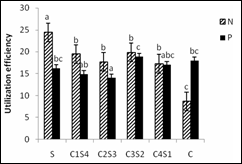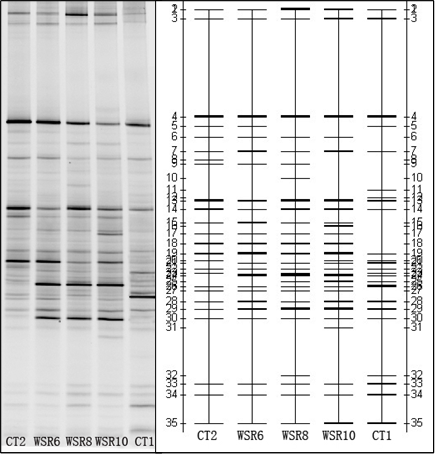 XiangliTian
XiangliTian
Professor, Laboratory of Aquaculture Ecology
Department of Aquaculture, Fisheries College, Ocean University of China
5 Yushan Road, Phone: 86-532-82032117
Qingdao 266003, Fax: 86-532-82032435
P. R. China Email:xianglitian@ouc.edu.cn
EDUCATION
BS, Freshwater Fisheries, Dalian Fisheries College, 1993
MS, Aquaculture, Ocean University of China, 1998
PhD, Aquaculture, Ocean University of China, 2001
RESEARCH
Research Interests:
My research focuses on aquaculture ecology and aquatic microbial ecology. For aquaculture ecology, our research has an emphasis on the optimization of structure and function and management for aquaculture ecosystems. And structure and function of microbial community in aquaculture ecosystems, application of probiotics in aquaculture is my research field in recent year.
Specific Research Directions:
1. Optimization of structure and function and management for aquaculture ecosystems. Multi-species polyculture can not only increase the species diversity of the ecosystem in the ponds and make full use of the living spaces, but also can improve the conversion rate of the input materials. However, it is very important to optimize the structure of cultural species in the muliti-species polyculture system. A series of parameters, such as water quality, culture profit and ecological efficiency could be used for optimization the structure of a polyculture system. For example, Nitrogenand phosphorusbudget were studied to optimize the structure of polyculture systems of Portunus trituberculatus with Litopenaeus vannamei. The results showed that the utilization efficiency of nitrogen in polyculture systems was significantlyhigher than monoculture systems. And the polyculture system yielding the best culturing benefit was consisted of at 6 crabs/ m2 and 45 shrimps/ m2.

2.Effects of probiotics on the growth of animals and microbial community structure. The probiotics in moderate application dose could effectively enhance the growth rate of aquacultural animals, and had significant influences on microbial community structure in both water and animals’ gut.For example, the composite probioticscontaining Bacillus subtilis, B. cereus and B. licheniformis, was applied into the water every 7 days. The specific growth rates of sea cucumber Apostichopus japonicuswith the doses of 108 and 1010 cfu/m3 were significantly higherthan those in the controls. The results from the analysis of PCR-DGGE showed that Bacilli, α-Proteobacteria, γ-Proteobacteria, δ-Proteobacteria, Flavobacteria, Bacteroidetes and Verrucomicrobiae were dominant in the water, while α-Proteobacteria, γ-Proteobacteria, δ-Proteobacteria, Flavobacteria, Bacteroidetes andBacilli were dominant in the gut of sea cucumber.Bacilli were the most dominant microflora in the gut of sea cucumber and increased up to 35.5% in relative abundance after the application of the composite Bacillus. Compared to the control, the relative abundance of γ-Proteobacteria increased to some extent as well, while those of the other bacteria decreased. 
3. Effects of environmental factors and nutritional status on the growth of aquatic animals and eco-physiological mechanisms. Several important aquatic animals such as Chineses shrimp Fenneropaneaus chinensis, tongue sole Cynoglossus semilaevis,sea cucumber Apostichopus japonicus,etc were studied until now. For example, effects of the amplitudeand frequency of salinity fluctuations on the growth, body composition and energy budget in the juvenile tongue sole was investigated. The results showed that the tongue sole exhibited higher specific growth rate at the amplitude of 4–6ppt with the frequency of 4 and 8 days than other treatments and the control. Food consumption, food conversion efficiency and apparent digestion in terms of energy increased significantly at salinity regimes favored the growth of fish. The growth rate of juvenile tongue sole was a quadratic function of the salinity amplitude at various frequencies. The optimal salinity amplitude to the growth of fish at different salinity fluctuations of 2, 4 and 8 days was estimated to be 3.54, 4.89 and 4.74 ppt respectively. Results in this study suggested that commercial farmers could rear juvenile tongue sole with moderate salinity fluctuations to achieve better growth performance in this species.

Current Research Projects (recent 10 years):
§ Technology for Management and Bioremediation of Ecological Environment in Sea Cucumber Ponds, National High-tech R&D Program of China (863 Program) (Grant No. 2006AA10Z409), 2006-2010
§ Eco-physiological Responses and mechanisms of Apostichopus japonicus to environmental stress, National Natural Science Foundation of China (Grant No. 2006AA10Z409), 2008-2010
§ Effects of environmental factors and nutritional status on the growth of Cynoglossus semilaevis and eco-physiological mechanisms, Reward Research Foundation for Talented Young and MiddleAged Scientists of Shandong, China (Grant No. 2005BS07004), 2006-2008
§ Studies on the utilization as resources on pollutants from sea cucumber ponds, NewCentury Excellent Talents inUniversity (GrantNo. NCET-08-0503), 2009-2011
§ Studies on structure and function of microbial community in sea cucumber ponds, NaturalScience Funds for Distinguished Young Scientists of Shandong Province(Grant no. JQ201009), 2010-2013
§ Key Technology of Micro-ecological Manipulation in Sea Cucumber Culture, Key Technologies R & D Program of Qingdao (12-6-1-6-hy), 2012-2013
Honors:
§ 2009-2011, NewCentury Excellent Talents inUniversity
§ 2010-2013, Distinguished Young Scientists of Shandong Province
§ Member of a Committee of Microbial Ecology, Ecological Society of China
PUBLICATION (indexed by SCI, recent 10 years)
Yan, F.j., Tian, X.L.*, Dong, S.L., 2014. Growth performance, immune response, and disease resistance against Vibrio splendidus infection in juvenile sea cucumber Apostichopus japonicus fed a supplementary diet of the potential probiotic Paracoccus marcusii DB11. Aquaculture, 420-421:105-111.
Khairnar S.O., Tian, X.L.*, Fang Z.H., Dong, S.L., 2013. Effects of the amplitude and frequency of salinity fluctuations on the growth performance of juvenile tongue sole (Cynoglossus semilaevis). The Israeli Journal of Aquaculture – Bamidgeh, IJA_65.2013.954
Du, R.B., Zang, Y.Q., Tian, X.L. *, Dong, S.L., 2013. Growth, Metabolism and Physiological Responses in the Sea Cucumber, Apostichopus japonicus (Selenka) During Periods of Inactivity. Journal of Ocean University, 12(1): 146-154.
Zang, Y.Q., Tian, X.L. *, Dong, S.L., Dong, Y.W., 2012. Growth, metabolism and immune responses to evisceration and the regeneration of viscera in sea cucumber, Apostichopus japonicus. Aquaculture, 358-359: 50-60.
Fang, J.H., Tian, X.L. *, Dong, S.L., et al., 2012. An experimental study on the compensatory growth of tongue sole, Cynoglossus semilaevis (Günther, 1873), following lower temperature manipulation. Aquaculture Research, Doi:10.1111/are.12101.
Zhou, Y., Tian, X.L., Li, Y.S., et al., 2012.Development of a multi-component chemically reactivedetection conjugate for the determination of Hg(II) in waterSamples. Analytica Chimica Acta, 2012, 724: 98-103.
Zhou, Y., Tian, X.L., Li, Y.S., et al., 2011. A versatile and highly sensitive probe for Hg(II), Pb(II) and Cd(II) detection individually and totally in water sample. Biosensors and Bioelectronics, 30 : 310-314.
Zhou, Y., Tian, X.L., Li, Y.S., et al., 2011. An enhanced ELISA based on modified colloidal gold nanoparticles for the detection of Pb(II). Biosensors and Bioelectronics, 26 : 3700-3704 (Co-first author)
Tian, X.L. , Fang, J.H., Dong, S.L., 2010. Effects of starvation and recovery on the growth, metabolism and energy budget of juvenile tongue sole (Cynoglossus semilaevis),Aquaculture, 122–129.
Fang, J.H., Tian, X.L. *, Dong, S.L., 2009. The influence of water temperature and ration on the growth, body composition and energy budget of tongue sole (Cynoglossus semilaevis). Aquaculture, 299:106-114.
Feng C, Tian X, Dong S, Su Y, Wang F, Ma S., 2008. Effects of frequency and amplitude of salinity fluctuation on the growth and energy budget of juvenile Litopenaeus vannamei (Boone). Aquaculture Research, 39(15):1639-1646.
Tian, X.L., Dong, S.L., Wang, F., Wu, L.X., 2006. The growth of juvenile Chinese shrimp, Fenneropenaeus chinensis Osbeck, at constant and diel fluctuating temperature. Journal of Shellfish Research, 25(3): 1007-1012.
Tian, X.L., Dong, S.L., Wang, F., Wu, L.X., 2005. The Effects of thermal amplitude on the growth of Chinese shrimp Fenneropenaeus chinensis Osbeck. Aquaculture, 251: 516-524.
Tian, X.L.and Qin, J.G., 2004. Effects of Previous Feeding Regimes on Compensatory Growth in Barramundi Lates calcarifer. Aquaculture,235(1-4): 273-283.
Tian, X.L. , Dong, S.L., Wang, F., Wu, L.X., 2004. The effects of temperature changes on the oxygen consumption of Chinese shrimp, Fenneropanaeus chinensis Osbeeck. Journal of Experimental Marine Biology and Ecology , 310(1): 59-72.
Tian, X.L.,Qin, J. G., 2003. A single phase of food deprivation provoked compensatory growth in barramundi Lates calcarifer. Aquaculture, 224:169-179.